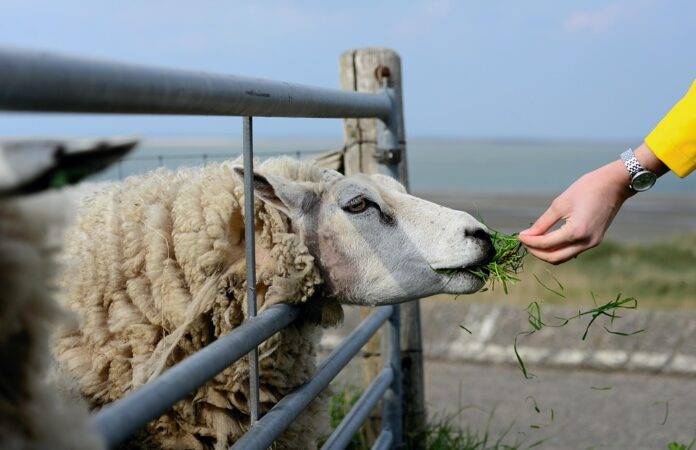Introduction
The sheep meat industry is evolving, with consumer preferences shifting due to various factors. Understanding these factors is crucial for producers, marketers, and retailers. This report outlines the top 10 factors influencing consumer sheep meat preferences, providing insights into market trends, consumer behavior, and financial implications.
1. Health Consciousness
Consumers are increasingly aware of health-related issues and the nutritional benefits of sheep meat. Lamb is rich in high-quality protein, vitamins, and minerals, appealing to health-conscious consumers. According to the USDA, a 3.5-ounce serving of lamb provides 25 grams of protein, nearly 50% of the daily value for an adult. As consumers seek leaner and healthier options, the demand for grass-fed and organic lamb is rising. The global organic lamb market is projected to grow at a CAGR of 9.5% from 2023 to 2030.
2. Sustainability and Ethical Concerns
Sustainability practices and animal welfare are essential considerations for consumers today. Many prefer sheep meat from farms that adhere to ethical practices, including free-range grazing and humane treatment. A survey conducted by the Food Marketing Institute revealed that 70% of consumers are willing to pay more for meat that is sustainably sourced. Companies that highlight their sustainable practices in marketing can attract these discerning consumers.
3. Flavor and Quality
Flavor remains a significant factor in sheep meat preferences. The unique taste of lamb, influenced by breeds, feed, and cooking methods, impacts consumer choices. The American Lamb Board reports that 80% of consumers associate lamb with high-quality dining experiences. Premium cuts, such as rack of lamb and lamb chops, command higher prices, with retail prices averaging $15 to $25 per pound, reflecting consumer willingness to invest in quality.
4. Cultural and Regional Influences
Cultural preferences play a critical role in sheep meat consumption. In regions like the Mediterranean and Middle East, lamb is a staple, often featured in traditional dishes. The USDA’s Foreign Agricultural Service indicates that lamb consumption in the Middle East is approximately 3.5 kg per capita per year, significantly higher than the global average of 0.7 kg. Cultural events and festivals also drive demand, particularly during holidays such as Eid al-Adha, where sheep meat is traditionally consumed.
5. Price Sensitivity
Price sensitivity remains a crucial element influencing consumer behavior. Economic downturns or fluctuations in meat prices can lead to decreased demand for premium sheep meat. The average price of lamb has fluctuated between $10 to $15 per pound over the past decade. Consumers often compare prices between different meat options, leading to increased interest in lower-cost alternatives when budgets tighten.
6. Convenience and Preparation Time
The busy lifestyles of modern consumers have led to a preference for convenience. Ready-to-cook or pre-marinated sheep meat products are gaining popularity. According to a report by Grand View Research, the global convenience food market is expected to reach $1.64 trillion by 2026. Products that offer easy preparation methods appeal to time-strapped consumers, influencing their purchasing decisions.
7. Marketing and Branding
Effective marketing strategies play a significant role in shaping consumer preferences. Brands that emphasize quality, origin, and sustainability can differentiate themselves in a competitive market. Social media campaigns, influencer partnerships, and transparent supply chains can enhance brand visibility and consumer trust. According to Statista, 79% of consumers are influenced by social media posts when making food purchasing decisions.
8. Dietary Trends
The rise of dietary trends, such as keto and paleo diets, has impacted consumer preferences for sheep meat. These diets emphasize high protein and low carbohydrate intake, making lamb an attractive option. A report by the International Food Information Council found that nearly 60% of consumers are trying to eat more protein, driving demand for meat products. Lamb’s versatility allows it to be incorporated into various recipes that align with these dietary preferences.
9. Availability and Accessibility
The availability of sheep meat in retail and foodservice sectors influences consumer choices. Regions with limited access to lamb products may see lower consumption rates. The USDA reports that sheep meat production in the U.S. totaled approximately 200 million pounds in 2022, with distribution concentrated in specific regions. Increasing the availability of sheep meat in supermarkets and restaurants can help meet growing consumer demand.
10. Innovations in Product Offerings
Innovative product offerings, such as lamb sausages, ready meals, and gourmet cuts, are attracting a broader consumer base. As culinary trends evolve, companies that adapt their product lines to include diverse lamb offerings can capture new market segments. The introduction of lamb-based snacks and ready-to-eat meals is projected to increase lamb consumption among younger consumers, particularly millennials and Gen Z.
Conclusion
Understanding the factors influencing consumer sheep meat preferences is essential for stakeholders in the meat industry. Health consciousness, sustainability, flavor, cultural influences, price sensitivity, convenience, marketing, dietary trends, availability, and product innovations all play a role in shaping consumer choices. By aligning marketing strategies with these factors, producers and retailers can better meet consumer demands and enhance market share in the competitive sheep meat industry.
[Read More: Global Sheep Industry Report 2025: Market Trends & Forecasts]



